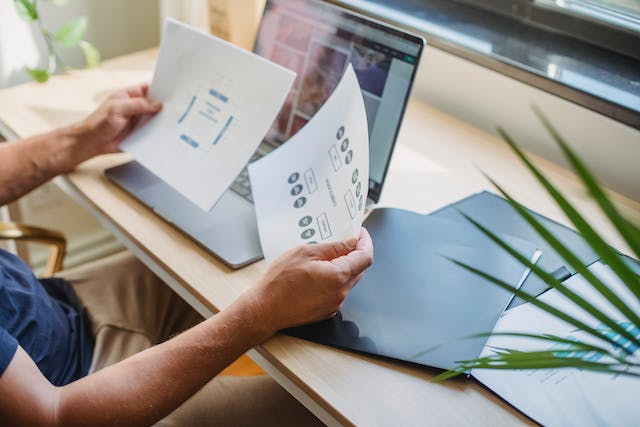Website design is an ever-evolving field that constantly adopts new techniques and trends to enhance user experience and engagement. As we move into 2024, designers are exploring innovative ways to make websites more visually appealing and user-friendly.
Let’s explore some exciting trends that are shaping the future of website design.
Complex Gradients: Adding Depth to Flat Images
Flat design has been popular for several years, but this year, designers are taking it to the next level by incorporating complex gradients.
These gradients add depth and dimension to flat images, creating a visually stunning and immersive experience for users.
By carefully blending colours and incorporating subtle transitions, designers can create eye-catching visuals that captivate and engage users.
Behavioural Design: Optimising User Experience
This year, designers are focusing more on behavioural design to optimise user experience. Behavioural design involves understanding how users interact with websites and tailoring the design to meet their needs.
By studying user behaviour and implementing intuitive design patterns, designers can create websites that are easy to navigate and provide a seamless user experience. This trend aims to maximise user engagement and conversion rates.
Voice Optimisation: Creating Voice-Friendly Websites
With the rise of voice assistants and smart devices, voice optimisation has become a crucial aspect of website design. Designers are now considering voice user interfaces (VUI) to make websites more voice-friendly.
This involves optimising website content for voice search and incorporating voice commands for navigation. By embracing voice optimisation, websites can cater to users who prefer hands-free browsing, enhancing accessibility and convenience.
Thumb Friendliness: Designing for Mobile Users
As mobile usage continues to dominate internet traffic, designers are prioritising thumb friendliness in their designs. The thumb-friendly design ensures that users can comfortably navigate websites using just their thumbs on mobile devices.
This includes placing important elements within easy reach of the thumb, optimising button sizes, and considering the ergonomics of one-handed usage. By designing with mobile users in mind, websites can provide a seamless experience across all devices.
Hoverable Iconography: Interactive and Engaging
Hoverable iconography is a trend that adds interactivity to websites. When users hover over icons or images, additional information or animations are revealed, creating a dynamic and engaging experience.
This trend encourages users to explore and interact with the website, increasing user engagement and time spent on the page. It also adds a layer of visual interest and surprise that keeps users intrigued.
Scrapbook Aesthetics: Nostalgic and Personal
Designers are incorporating scrapbook aesthetics into website design. This trend adds a nostalgic and personal touch to websites by using elements like torn paper edges, handwritten fonts, and collage-like layouts.
Scrapbook aesthetics evoke a sense of familiarity and warmth, making users feel connected to the content and the brand.
This trend is particularly popular for websites in creative industries such as photography, art, and fashion.
Overlapping Text: Creating Visual Hierarchy
Overlapping text is a design technique that creates a visual hierarchy and adds depth to the layout. By overlapping text elements, designers can draw attention to specific words or phrases, making them stand out.
This trend adds a sense of dynamism and visual interest to websites, making them more engaging and memorable. However, it’s important to use overlapping text sparingly to maintain readability and avoid clutter.
Typographic Layouts: Bold and Expressive
Typography is a powerful design tool, designers are pushing the boundaries with bold and expressive typography layouts. This trend involves using large, attention-grabbing typography as a focal point of the design.
By experimenting with different fonts, sizes, and styles, designers can create visually striking layouts that leave a lasting impression on users. Typographic layouts can convey emotions, establish brand identity, and enhance the overall user experience.
Readapting the 404 Error Page: Turning Mistakes into Opportunities
The 404 error page is often overlooked, but the designers are turning this error message into an opportunity for creativity. Instead of displaying a generic error message, designers are creating custom 404 pages that entertain and engage users.
This trend includes adding interactive elements, humorous illustrations, or personalised messages that direct users back to the main website. By transforming a frustrating experience into a delightful one, websites can leave a positive impression on users even when things go wrong.
As we step into 2024, website design continues to evolve and embrace new trends that enhance user experience and engagement. From complex gradients and behavioural design to voice optimisation and thumb friendliness, these trends are reshaping the way we interact with websites.
By staying abreast of these developments, designers can create visually stunning and user-friendly websites that captivate and delight users. So, buckle up and get ready to embrace these exciting trends to take your website design to the next level.
